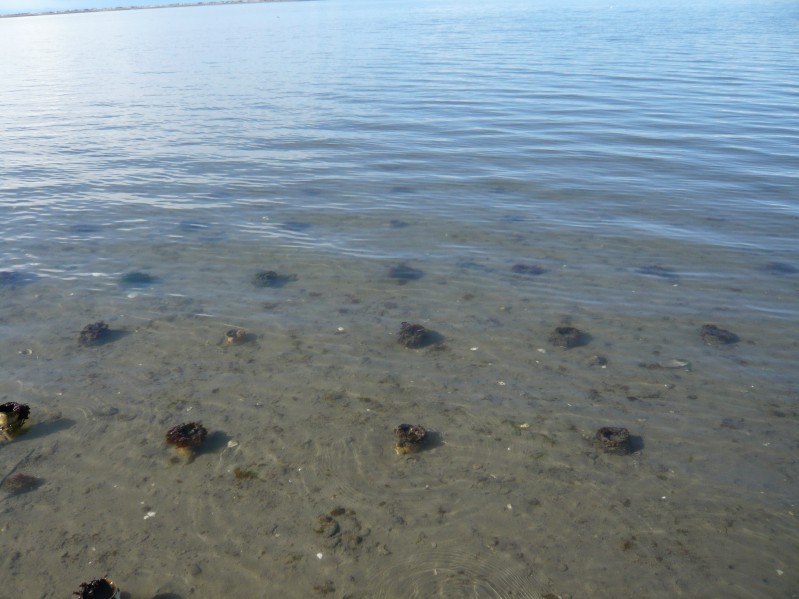
Full image here.
And here's a topo map of the spit area:

Full image here.
The town of Sequim is situated a few miles inland from the spit. It's small, only about 5500 people in the town proper and much of the remainder is farmland, pastures, etc. Several years ago someone decided to revitalize the area by turning the place into a lavender mecca, so there are a lot of lavender farms. A lot of cows as well, though I don't know if they were used for meat or dairy or what. The area seems to be growing with a lot of retirees and a lot of farms seem to be turning into housing developments. Still, the downtown core is pretty livable and has quite a few decent little shops and restaurants, plus a bunch of hotels along the main strip.
We stayed out at a place right on the water called the Dungeness Bay Cottages. This is the view out the front:

Full image here.
It's kind of down near the base of the spit, which you can just see as a thin line out in the water. It was cold most of the weekend and snowing over most of the Puget Sound area, though not really sticking. Here's a semi-areal shot of the spit:

Full image here.
As noted in the former post linked above, the bluffs here are all glacial till, steadily eroding backwards. If you look at a map of the area (larger area than the one above), the islands off in the distance are the San Juans and if you straight across is the southern end of Vancouver Island. You can see Victoria from where we were.
Again, in the previous post I mentioned a visit to the local museum that houses some of the stuff from the Manis mastodon site. This time I remembered the camera! So here are a couple of shots of that:

Full image here.
I like the way they placed some of the skeleton on the painting so you can really see the scale of the critter. They have the tusks on-site in a water bath for preservation:

Full image here.
The old post has some links to both the museum (ergh: I now see two of the links are no longer valid; will check on those). Anyway, beach combing is a must:

Full image here.
This is a protected bay so oysters and numerous other molluscan species are abundant. In fact, the beach at low tide is littered with live oysters; no worries about starving. Dungeness crab is also abundant, but not nearshore enough to see any, except perhaps the young'uns which crowd under rocks at low tide. Also abundant are chiton:

Full image here.
Not sure what these are:

Full image here.
They're not posts, they're hollow pipes, look like PVC. This one has an oyster growing right next to it and another had an anemone growing within it:

Full image here.
I'm wondering if this wasn't set up specifically to attract wildlife, something like the way artificial reefs are built. Other wildlife are deer, bald eagles, a herd of elk, seals, and, um, this fierce creature:

Full image here.
One more beach shot. This is at the 3 Crabs Restaurant which is my favorite place there. It's not the fanciest food, pretty basic fare, but perfectly done. I've never been disappointed by either the food or the service.

Full image here.
The pilings going out are from the original pier (if you search around for Sequim-related sites, there are probably some historic photos of it). This was a pretty low tide and the seagulls were having a field day; there was a young bald eagle perched on one of the pilings (not in this photo). There's quite a few around the area; one had his own little perch in a tree just down the road from the motel and was sitting there nearly every morning when we drove by.

Full image here.
And the usual sunset photo.